
Hui Min Leung
Assistant Professor of IUB Intelligent Systems Engineering
The Luddy Faculty Fellows program, funded as part of a transformative, $60 million gift from Fred Luddy in 2019, is designed to support excellence in research that is—or promises to be—important, imaginative, or timely.
Each year, the Luddy School selects a small group of Faculty Fellows through a competitive process led by the Dean, Associate Dean for Research, and a faculty selection committee.
Award Details:
Faculty Fellows receive a $20,000 research award plus $5,000 toward summer salary. Fellows may use the title Luddy Faculty Fellow during the award period and are expected to share their work with the Luddy community through a culminating talk.
Call for Applications:
The application cycle opens each September. Watch for the official call in your email from the Associate Dean for Research.
Eligibility:
All tenure-track and non-tenure-track faculty in the Luddy School are eligible to apply, provided they have not received the award in the past five years.
Selection Criteria:
Fellowships are intended to support research that is—or has the potential to be—important, novel, and timely. Awards may help recipients:
Projects will be selected to reflect the diverse and interdisciplinary research across the Luddy School.

Hui Min Leung
Assistant Professor of IUB Intelligent Systems Engineering
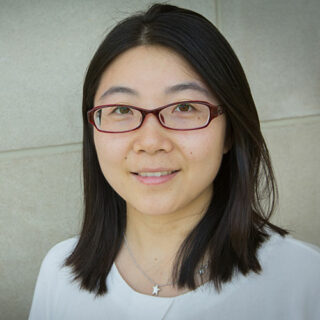
Jingwen Yan
Associate Professor of IUI Bioinformatics
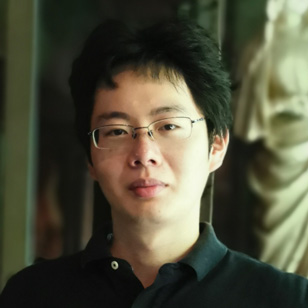
Bingchen Deng
Assistnat Professor of IUB Intelligent Systyems Engineering

Haewoon Kwak
Associate Professor of IUB Informatics
Proposal
“Persona Exchange Test (PET): A Novel Technique to Reveal Social Hierarchical Bias Encoded in Large Language Models That Are Not Visible at the Language Level Alone”
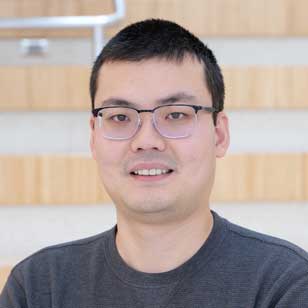
Da Yan
Associate Professor, of IUB Computer Science
Proposal
“Enabling the Future of Spatial Intelligence with the Synergy of Accelerated 3D Query Engine, 3D Data Visualization, and 3D Computer Vision and AI”
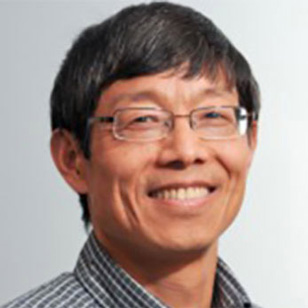
Xukai Zou
Professor of IUI Computer Science
Proposal
“Privacy-Preserving Multimodal Vertical Federated Learning for Intelligent Transportation Systems”

Xiaojing Liao
Privacy-Accountable Large Language Model-Integrated System
The proliferation of large language model-integrated systems (LLMSs) e.g., healthcare chatbots or personal virtual assistants) has ushered in a new era of technological advancements and transformations across numerous aspects of our daily lives. These LLMSs, equipped with sophisticated algorithms and vast datasets, are instrumental in powering innovative solutions across diverse domains, from healthcare and finance to entertainment and communications. These systems have a remarkable capacity to understand and generate human-like text for tasks ranging from language translation to content generation. However, this rapid integration of large language model (LLMSs) into our lives has not occurred without raising important concerns, most notably in the realm of privacy. In this project, Liao argues that a privacy-accountable LLMS is the solution to implement proactive privacy-enhancing measures, continuously enforce privacy accountability, as well as fostering responsible data usage and privacy protection.
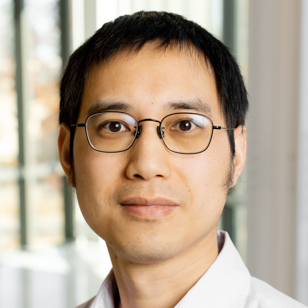
Quantum Data Management: Recording the Essence of Nature
Quantum information and computing seek to leverage the principles of quantum mechanics to fundamentally transform computation across many domains. Previous research has primarily focused on designing quantum algorithms that demonstrate a provable advantage over classical counterparts when applied to classical data. In contrast, conducting analytics directly on quantum data has largely remained an unexplored territory. The nature, along with scientific experiments, generates massive quantities of quantum data every day. In many cases, there is a natural desire for us to record the quantum data that has been collected or generated to facilitate future analysis.
In this project, Zhang aims to formulate a model for representing and storing quantum data that allows us to handle basic data analytics efficiently and sustainably. In pursuit of this goal, we must tackle distinctive challenges in the quantum world, such as post-measurement state disturbance, the no-cloning principle, and the expensive quantum state tomography. This project attempts to take the first step in this new and exciting research frontier, with the goal of paving the way for a comprehensive quantum data management system for the next generation.

Deep Reinforcement Learning with Human-Inspired Memory
Tiganj’s research aims to develop a novel neural network architecture that integrates insights from a computational neuroscience memory model with state-of-the-art Artificial Neural Networks (ANNs). This approach will result in a specific representation of knowledge in the form of cognitive maps, which are thought to play an essential role in human learning and reasoning. The evaluation will be done on a set of tasks that resemble tasks commonly used to study mammalian learning, such as interval timing, numerosity judgments, and spatial navigation.
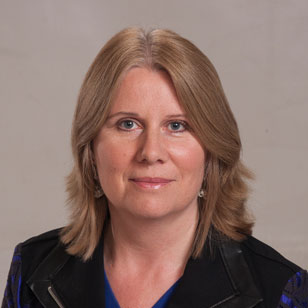
Maria Bondesson
Leveraging Single Cell Sequencing for Deciphering Mechanisms Behind Chemical Exposure-Induced Birth Defects
About 8 million infants are born each year with birth defects. Although the underlying cause for each baby is often unknown, birth defects generally result from genetic alterations and/or environmental exposures. Major congenital anomalies usually occur during the embryonic period (weeks 3–8), a critical developmental phase during which fetal organogenesis takes place. Chemical and drug exposure during this susceptible embryonic period has been linked to fetal teratogenicity. Bondesson’s project aims to apply the recently developed method of single-cell mRNA sequencing to chemically exposed zebrafish embryos to elucidate the molecular mechanisms of teratogenicity. Data-producing experimentation, coupled with bioinformatic analysis, will, at a high resolution, identify the genes and cells of different cell lineages that are altered by chemical exposure and lead to birth defects.

Kahyun Choi
Computational Poetry Analysis: AI for Literature
Choi’s research focuses on the intersection of technology, humans, and music. This project will develop AI-based NLP systems that achieve a high-level understanding of a poem, such as its emotion and theme. Her project will focus on three questions: 1) Can advanced deep learning-based language processing models, such as BERT, decipher emotions and themes of poems? 2) Can learned model on song lyrics be re-purposed for poem content analysis, given their common characteristics? 3) Do auxiliary data, such as authors’ notes on their poems and crowdsourced word emotion labels, provide additional information to the poem analysis systems?
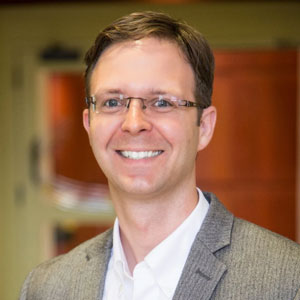
Preparing Cancer Patient Digital Twins to Forecast Progression and Treatment
Macklin’s work focuses on cancer patient digital twins—predictive models that are tailored to individual patients to predict cancer progression and therapeutic response. This proposal will enhance the scope and expedite progress to prototype, analyze and refine CPDTs for melanoma pulmonary (lung) metastases. This project will develop the methodologies to fuse dynamical cancer models with AI and data assimilation, providing a critical step in personalizing predictive cancer models to assist clinical decision making and improve care.

Reverse Engineering the Origins of Visual Intelligence
Wood creates high-precision methods for studying newborn animals, specifically, the origins of their core cognitive abilities. He then builds autonomous models that can create artificial brains that learn in the same way as newborns. As a cognitive scientist with a background in psychology, neuroscience, and artificial intelligence, Wood’s goal is to reverse engineer the learning mechanisms in newborn brains. In this project, he will use a new experimental system to build task-performing computational models of newborn visual systems.
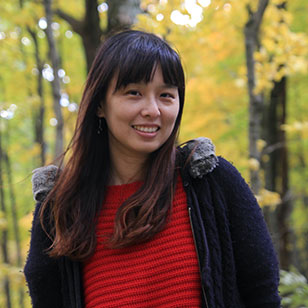
Examining Food Experiences during Routine Disruptions
Chung’s work focuses on examining how disruptions in a person’s daily routine influences health behavior and practices with a goal of designing tools that help people stick to healthy eating habits when faced with challenges such as moving, pregnancy, a change in employment status, or illness. Chung’s proposal aims to use healthy eating as an example to examine how disruptions could influence healthy behavior and practices. Understanding how routine disruptions influence eating and food preparation could provide insights into how to design tools that help people stick to their healthy eating goals despite disruptions.

An intelligent biomedical system for non-invasive cancer detection
The goal of Guo’s work is to develop a bioengineering device and intelligent system that can measure individual cell stickiness (cell-cell adhesion) across a large cell population with high-precision, which will address the inability to measure highly heterogeneous clinical samples and provide new means of detection for metastatic diseases. The device employs digitalized acoustics and fluidics to measure individual cell stickiness across a large cell population by rupturing cell-cell physical contact. The proposed device aims to measure individual cell stickiness with high-sensitivity across a wide range of stickiness strength and unprecedented number within a short time.